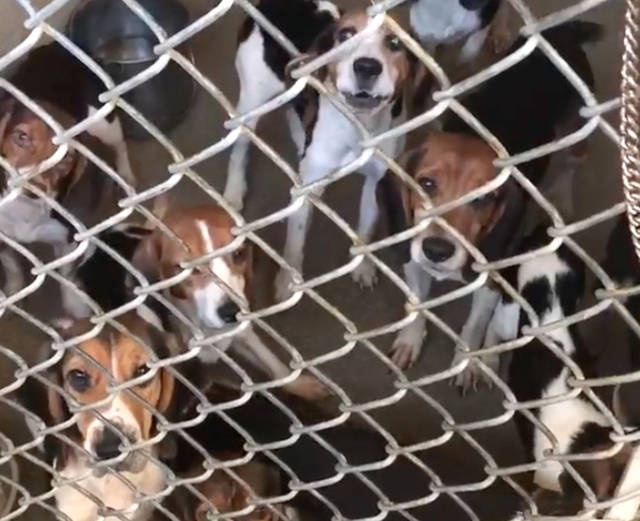https://triblive.com/local/north-hills/revised-mccandless-pet-law-focuses-on-animal-welfare-preventing-nuisances/
Revised McCandless pet law focuses on animal welfare, preventing nuisances

An incident early last year in which McCandless firefighters rescued a woman and at least 20 dogs from a burning home helped fuel discussions among town officials about whether steps should be taken to limit the number of pets residents can own.
But trying to decide on a maximum proved daunting when the range in the size of pets — especially dogs — and the differences in the size of properties in McCandless was considered.
So rather than try to decide if a pair of St. Bernards in a tiny house or half-a-dozen teacup poodles in a sprawling home is too many, officials are taking a different tact.
According to revisions being proposed to the town’s law governing the keeping of pets, residents can basically own as many pets as they want. Town attorney Gavin Robb said rather than setting an objective number, the proposed change allows town officials to take a case-by-case approach when trying to determine if there are too many pets living on a property.
“One of the things a lot of people had been asking is, why can’t we just pick a number when it comes to the number of dogs you’re allowed to own,” Robb told council at its June 8 meeting. “But based on case law, picking a number is not the way to go.”
Setting a specific number, he said, would be difficult to defend and enforce because some courts have ruled that such numbers are set arbitrarily and do not take into account the differences in the size of pets and the properties on which they live.
“One size does not necessarily fit all,” he said.
By basing the law on what Robb described as the common-sense concept of “customarily incidental to a residential use,” the town would have flexibility when reviewing a case.
“It essentially requires that you have sufficient space to humanely care for your animals and that they cannot have a negative impact on neighbors,” he said.
A key factor that will be used when determining if there are too many pets living on a property is whether the number has changed the use of the home, Robb said.
“This would limit enforcement to situations where the home has really become more of a kennel or animal rescue and the actual home has become secondary,” he said.
To guide officials, the proposed ordinance includes definitions for kennel and rescue operations, which are limited to commercial districts.
Fostering pets is permitted in residential properties under the revised law, but homeowners would have to follow the same guidelines governing ownership of personal pets.
While the number of pets a person owns will not necessarily be an issue of concern for town officials, they would get involved if the situation became a nuisance to neighbors or threat to public health and safety.
“If an animal is getting off the leash and causing property damage, there are separate regulations on the books in McCandless that would allow those folks to be reported to code enforcement and police would be able to cite those people if they are not taking care of their pets,” Robb said.
To ensure that suspected incidents of animal cruelty are investigated, the revised ordinance includes a requirement that town officials notify the county’s humane officer when such reports are received.
Council is expected to hold a public hearing in August before considering whether to adopt the changes in the ordinance, which also regulates raising chickens on residential properties.
A copy of the proposed ordinance can be viewed on Page 79 of the June 8 council meeting agenda.
Copyright ©2025— Trib Total Media, LLC (TribLIVE.com)
